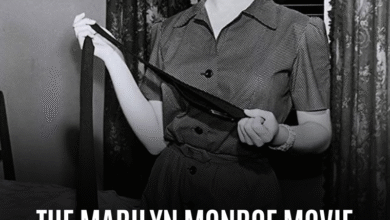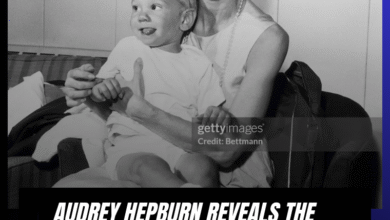How Arnold Schwarzenegger’s $750 Mr. Olympia Win Compares to Today’s $600,000 Prize Pool
OPINION: This article may contain commentary which reflects the author's opinion.
Arnold Schwarzenegger, a seven-time Mr. Olympia winner and legendary figure in bodybuilding, has long been an outspoken advocate for the sport. Known for his competitive dominance in the 1960s to 1980s, Schwarzenegger has recently compared the financial landscape of bodybuilding during his time to that of today, highlighting the dramatic increase in prize money and sponsorships for modern athletes.
Bodybuilding in Arnold’s Era: Modest Earnings with Hard Work
Schwarzenegger has often discussed the financial challenges he faced as a bodybuilder in his prime. In an interview with Sportskeeda, he revealed that when he won the Mr. Olympia competition in 1974, he was awarded just $750. Reflecting on the modest prize money, Schwarzenegger emphasized, “In my days, there was no money. I mean, imagine, [when I] won the Mr. Olympia competition. I remember in 1974, and we got like $750. I mean $750 — and again, we didn’t do it for the money.” For Arnold, bodybuilding was not a financial pursuit, but rather a passion and a way to build a career in the fitness industry.
Schwarzenegger also supplemented his income by working construction and brick-laying jobs, which were common for bodybuilders at the time, as reported by Sportskeeda. This reality paints a picture of the early days of professional bodybuilding, when financial rewards were minimal compared to the fame and fortune of today’s champions. According to Finance Monthly, prize money for Mr. Olympia in the 1960s and 1970s ranged between $1,000 and $20,000 per win, which, while a significant sum for the era, was far from the multi-million-dollar payouts seen today.
Today’s Financial Landscape: A Boom in Earnings
Fast forward to today, and the financial rewards for bodybuilding champions have seen an explosive growth. The prize money for the 2024 Mr. Olympia, won by Samson Dauda, was a staggering $600,000, with a total prize pool of $1.6 million for the event, as reported by Fitness Volt and Wikipedia. This represents a significant increase from Arnold’s era, where even the top prizes were limited to a fraction of what they are now.
The rise in prize money is a reflection of bodybuilding’s increased commercialization, driven in part by the global success of events like the Arnold Sports Festival, which Arnold himself founded in 1989. The festival, which now spans countries such as Australia, Spain, and South America, generates millions annually from ticket sales, sponsorships, and merchandise, contributing to the financial success of the sport.
In addition to prize money, modern bodybuilders benefit from more lucrative endorsement deals and sponsorships, as the sport has grown into a more mainstream phenomenon. This increased visibility, partly due to Schwarzenegger’s own role in the iconic documentary Pumping Iron (1977), has transformed bodybuilding from a niche sport into a global industry, opening doors for additional financial opportunities.
Comparing Prize Money: Then and Now
To better illustrate the contrast in financial rewards, here is a comparison of prize money from Arnold’s era to that of today’s champions:
| Era | Prize Money Range | Notes |
|---|---|---|
| 1960s-1980s (Arnold’s Era) | $1,000 – $20,000 | Modest prizes, e.g., $750 for 1974 Mr. Olympia win, supplemented by other jobs. |
| 2020s (Today) | Up to $600,000 | 2024 Mr. Olympia winner earned $600,000, part of a $1.6 million total purse. |
The financial disparity between the two eras is stark, with today’s bodybuilders earning a far larger share of the prize pool. The 2023 Mr. Olympia winner earned $675,000, and the 2022 total purse was also $1.6 million. In comparison, the highest prize in Arnold’s time was a fraction of what modern winners receive, reflecting both the sport’s expanded commercial reach and the growing popularity of bodybuilding worldwide.
Schwarzenegger’s Perspective: Are Modern Bodybuilders Overpaid?
Despite the financial growth in bodybuilding, Arnold has expressed mixed feelings about the changes. While acknowledging the increased earnings of today’s athletes, he has also raised concerns about what he perceives as an overcompensation for modern bodybuilders. “It was not like today where they make a million dollars or whatever,” he remarked on Sportskeeda, suggesting that the financial landscape of the sport has shifted drastically. While he doesn’t dispute the commercial success of the modern era, he does hint that some bodybuilders might be overpaid compared to his time, where financial gain was not the primary motivation.
Schwarzenegger’s Lasting Influence on Bodybuilding’s Financial Success
One of the key factors contributing to bodybuilding’s financial boom today is Arnold Schwarzenegger’s influence. Through his successful film career, including starring in movies like The Terminator and Total Recall, Arnold brought bodybuilding into the mainstream, elevating the sport’s visibility. His involvement in Pumping Iron helped introduce the world to bodybuilding as more than just a competitive sport, but a lifestyle. This increased exposure, combined with his founding of the Arnold Sports Festival, has significantly contributed to the rise in sponsorships and prize money for today’s athletes.
Conclusion: From Modest Beginnings to Lucrative Rewards
The financial evolution of bodybuilding, from the modest earnings Arnold Schwarzenegger experienced in the 1970s and 1980s to the millions in prize money today, is a testament to the sport’s global growth. While Arnold’s era was defined by passion and dedication, often supplemented with additional jobs, today’s bodybuilders benefit from greater financial opportunities thanks to increased commercialization and mainstream visibility. Schwarzenegger’s influence, both as a bodybuilder and as a Hollywood star, has played a pivotal role in transforming the financial landscape of bodybuilding, leaving a lasting legacy on the sport.



